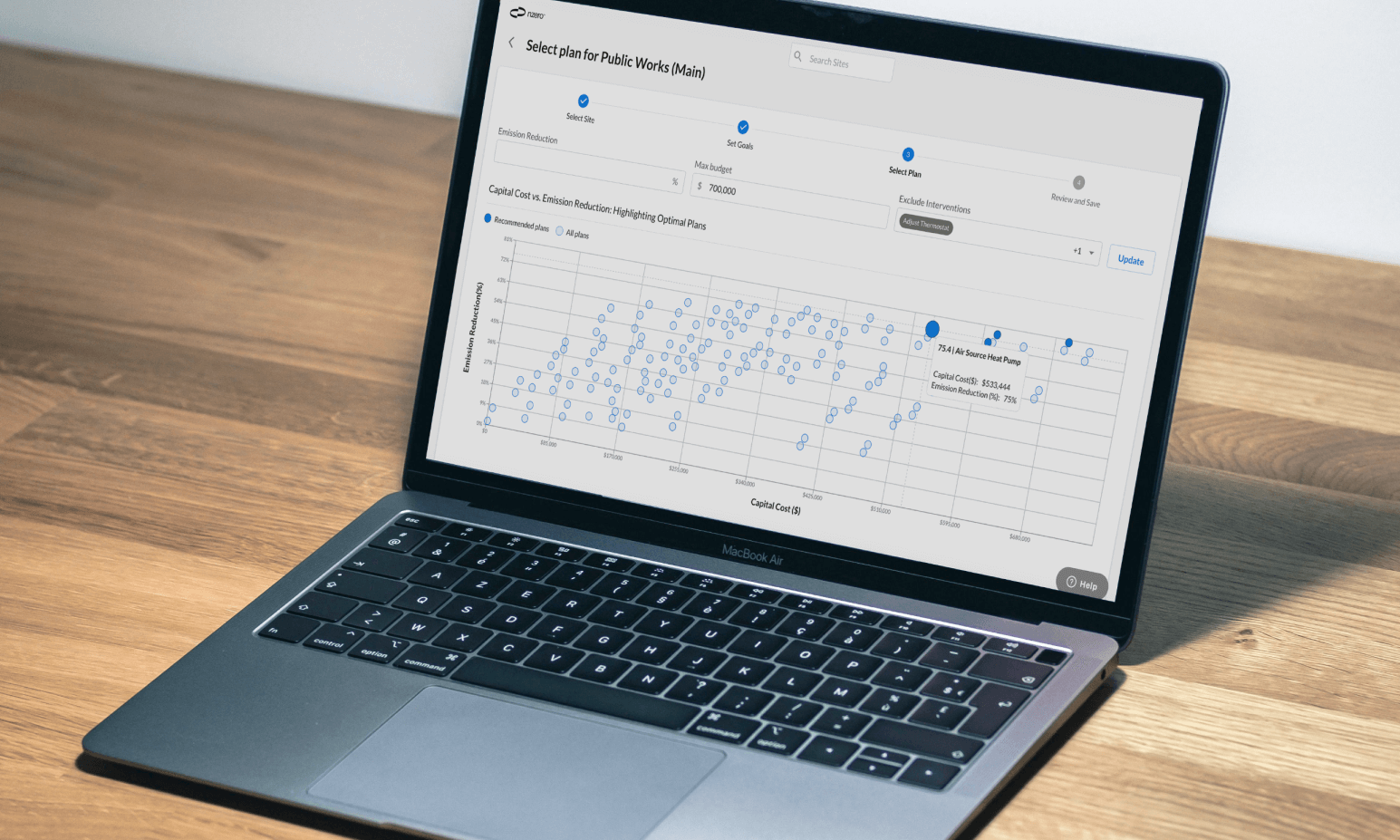What is Energy Use Intensity (EUI)?
Energy Use Intensity is a measurement of a building’s annual energy consumption relative to its size. Typically expressed in kBtu per square foot per year (U.S. standard) or kWh per square meter per year (international standard), EUI offers a normalized metric to compare the energy efficiency of buildings of different sizes and types.
The formula is straightforward:
EUI = Total Annual Energy Consumption / Gross Floor Area
For example, an office building that consumes 8,000,000 kBtu in a year with a gross floor area of 100,000 square feet has an EUI of 80 kBtu/sqft/year. Typical ranges vary by building type: offices average around 70–80, while hospitals, due to their intensive energy demands, often fall in the 200–300 range. By providing a single number, EUI makes it possible to benchmark against peers, spot inefficiencies, and track progress over time.
According to the U.S. National Median Reference values from ENERGY STAR Portfolio Manager, median EUI varies widely across building types: office buildings average around 67 kBtu/sqft/year, retail stores around 52, K-12 schools around 48, and hospitals over 230. These medians give owners a reference point to determine whether their building is performing above or below national averages, which is especially useful for those working toward net-zero targets.
Why EUI Matters in Energy Management
EUI is more than just an energy statistic. It is the cornerstone of modern energy management practices. First, it serves as a benchmarking tool, allowing organizations to compare the performance of their buildings with industry averages or regulatory requirements. Platforms such as ENERGY STAR Portfolio Manager rely on EUI to evaluate and score buildings, enabling owners to see how they measure up against similar facilities.
Beyond benchmarking, EUI plays a critical role in carbon accounting and sustainability planning. A reduction in EUI directly translates into lower greenhouse gas emissions, making it essential for organizations pursuing net-zero commitments or aiming to comply with local building performance standards, such as New York City’s Local Law 97 or Washington State’s Clean Buildings Act. In short, understanding EUI enables building owners and managers to meet regulatory, financial, and environmental objectives simultaneously.
How EUI Guides Energy Management Strategies
Integrating EUI into energy management strategies allows for data-driven decision-making. Among the key applications are:
- Establishing a baseline: EUI provides a reference point to measure improvements after efficiency measures are implemented.
- Setting reduction targets: Many organizations adopt goals such as reducing EUI by 20% within a decade.
- Monitoring operational changes: Shifts in EUI can highlight the impact of scheduling adjustments, occupancy changes, or retrocommissioning projects.
- Prioritizing investments: Portfolio owners can identify which assets have the highest EUIs and prioritize retrofits where they will yield the greatest return.
- Supporting disclosure and compliance: Many jurisdictions require annual reporting of building energy performance using EUI, making it a compliance necessity.
By embedding EUI into ongoing management, building operators can align financial planning, sustainability reporting, and compliance strategies.







